Agriculture
Challenges
Indian Agriculture sector employing an enormous 44% of India’s workforce, but contributes a meager 13% to the nation’s GDP. In a state of poor income 85% of these farmers cultivate in small pieces of land, often exposed to monsoon failure, floods, and droughts that affect the farmers drastically.
To compound their struggles, a significant proportion of farmers, particularly those with limited resources, resort to informal sources of credit and inescapable debt. Farmer’s suicides are at an increase year by year. This tragedy is mainly due to shift from traditional to modern farming that requires huge cost, that pushed farmer’s to debt burden and reliant on seed and chemical input corporations and lack of market linkages.
Indian farmers continue to stay in their lands which have already depleted dependant for seeds, water and air polluted, changing pest attacks and yields uncertain due to climate change in stress.
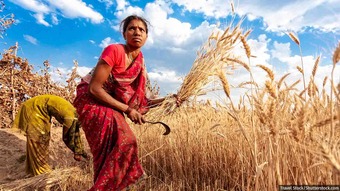
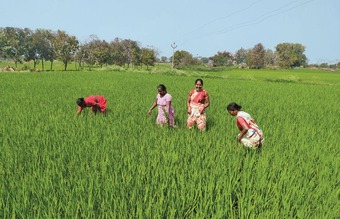
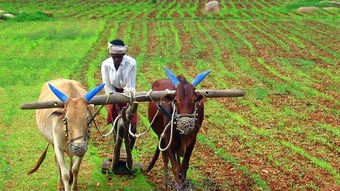
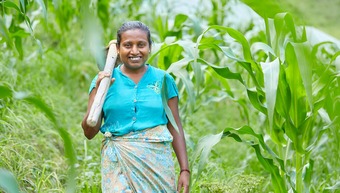
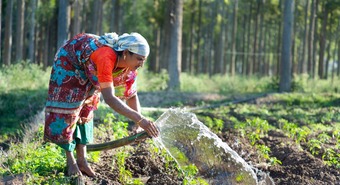
Our impact
The Society’s commitment to providing information and skills in conserving natural resources, enhancing biodiversity, and improving livelihoods has led to transformative changes in the target 12 villages.. Through its emphasis on ecological agriculture and community empowerment, this initiative has yielded significant impacts, as outlined below:
In summary, the society embowered local communities to become stewards of their land, improved livelihoods, ensured food security, and fostered a sense of collective responsibility for environmental conservation. The formation of farmer groups and the ongoing capacity building for cooperative producer organizations are indicative of a bright and self-reliant future for these communities.
Enhanced Environmental Conservation
Along with target villages, nearby local communities have become more aware of sustainable land management practices, leading to reduced soil degradation, erosion, use of organic inputs and the preservation of critical ecosystems.
Improved Livelihoods
By equipping community members with knowledge and skills related to ecological agriculture, the program has improved the livelihoods of approximately 5,000 small and family farmers in the target area.
Formation of Farmer Groups
The program has facilitated the formation of farmer groups among the community members. These groups serve as platforms for knowledge sharing, collaborative farming efforts, and collective decision-making. Often these farmers visit other farmer’s fields and learn and share in this platform of farm schools.
Capacity Building in Cooperative Producer Organizations
Currently, community members are undergoing the capacity-building phase for cooperative producer organizations. This phase is pivotal in establishing sustainable and community-driven agricultural systems that can withstand challenges and market fluctuations.
Subsequent Plan
Promotion of Organic Agriculture
The society aims for promote organic agriculture with a renewed focus on the conservation of biodiversity, soil, water resources, vegetation cover, and the overall well-being of farmers, With its existing farmer groups, it plans to create Farmers’ Producer Organizations (FPOs) dedicated to organic agriculture. These FPOs will serve as hubs for knowledge sharing, resource pooling, and collective marketing, thereby ensuring the prosperity of individual farmers.
To guarantee a steady supply of high-quality organic seeds, the organization will establish seed a bank, simultaneously; it will work on strengthening the entire organic value chain, from seed to market.
Establishing a Demonstration Plot is one of the most effective ways to propagate organic farming practices to showcasing the benefits of organic agriculture to local communities and inspiring others to adopt these methods. While starting in specific region, the organization has ambitious plans to extend the organic farming to other areas.
Sustainable forest management:
Deforestation is a severe and direct challenge Indigenous Peoples as forests are their livelihood, identity, economy and way of life, Rapid destruction of forest by way of illegal wood logging, infrastructure development plans, taping natural resources, and biodiversity loss not affects the Indigenous Peoples, but it also creates climate crisis. Forest fires often destruct the forest and make heavy damage to forests.
Assessing these challenges often requires a multi-stakeholder approach involving governments, local communities, NGOs, and the private sector. The society with its long identification with Indigenous Peoples and aware of Government policies to conserve forests committed to environmental conservation and the well-being of local populations.
Protection of tree species: CHVs play a crucial role in educating forest communities on the collection of rare forest species. These seeds are sown during the rainy seasons to help counteract the loss of forest resources.
Through these concerted efforts, the society is making a substantial impact.
Community Education and Vigilance
The society will persist in educating forest communities, with a special focus on women, about sustainable forest management practices and the relevant laws in our country.
It will encourage and empower these communities to actively monitor and report any instances of illegal logging, helping to protect our precious forests.
Environmental Education for Children: Our commitment to environmental education extends to the younger generation. We plan to use 3D models and interactive learning tools to educate children about their natural surroundings.
By involving parents and community leaders, we aim to create a supportive learning environment that fosters a deep understanding of forests and their ecosystems among the youth.
Youth, community leaders and children will be encouraged to learn about the forest and its habitats.
Women groups will trained and motivated to plant trees in their community forest areas to balance rapid degradation of forests.
Through these initiatives, we intend to continue our efforts in promoting sustainable forest management, protecting our forests, and fostering environmental stewardship within our communities.
